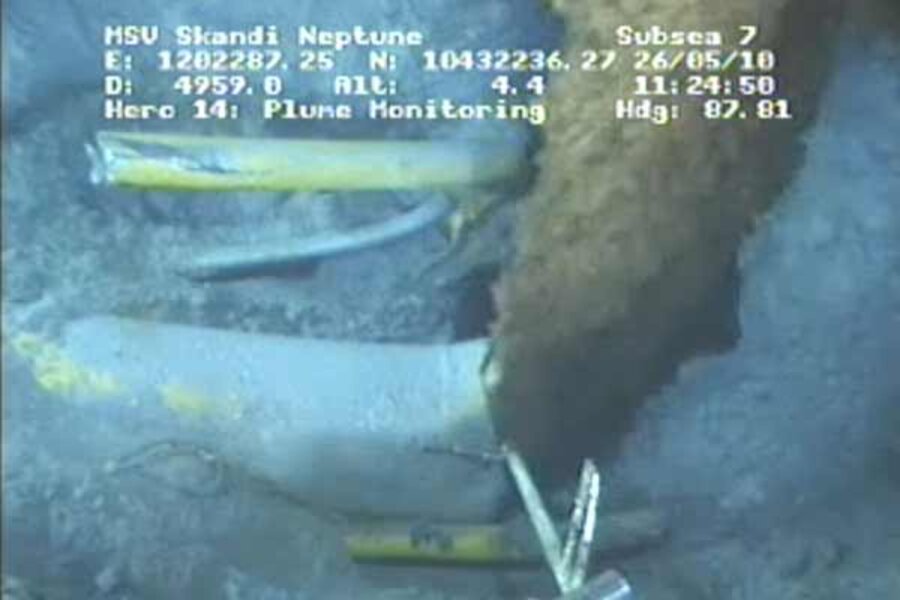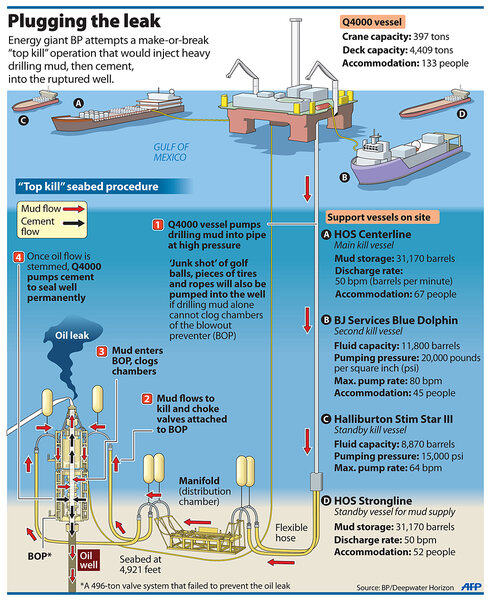How to watch BP live video feed of 'top kill' maneuver
Loading...
| Atlanta
It's not quite "American Idol," but the BP live video feed of the Deepwater Horizon gusher has fueled plenty of political drama and drawn millions of viewers eager to witness the distressing plume of free-flowing oil spilling into the Gulf of Mexico.
Now the plot thickens as BP aims to move forward with a high-stakes "top-kill" procedure where the company will attempt a first: plugging a violent leak in waters a mile deep, using a mixture of mud, viscous fluids, and even golf balls. Watch the BP live video feed here.
BP first announced it would shut down the video feed during the procedure, but pressure from a White House that has vowed transparency ensured that the American public will get to view the effects of the procedure on the flow of oil.
"Our push is for BP to be transparent, and what you're seeing today in terms of the top kill operation is in part a response to our directive," Interior Secretary Ken Salazar told the House Natural Resources Committee.
The struggle over the feed ties into challenges from Congress into BP's estimate of the flow. Rep. Edward Markey told the House Natural Resources Committee Wednesday that BP's high-end estimate of the leak was 14,000 barrels a day on April 28, the day the company insisted it believed the leak was only 1,000 barrels per day. The company faces penalties of up to $3,000 per barrel of oil spilled.
On its website, BP warns viewers not to read too much into changes in flow from the pipe as the top-kill is attempted. "Throughout the extended top kill procedure – which may take up to two days to complete – very significant changes in the appearance of the flows at the seabed may be expected," the statement says. "These will not provide a reliable indicator of the overall progress, or success or failure, of the top kill operation as a whole."
Analysts say the top-kill procedure has a 50-50 chance of succeeding (BP puts its chances at 60 to 70 percent) but officials are also weighing major risks. There is a possibility that the top-kill could backfire, breaking the flow of oil wide open from where it's currently restricted as it moves through a the crumpled "riser" pipe left lying on the Gulf floor after the Deepwater Horizon rig exploded and sank on April 22.
Related:






